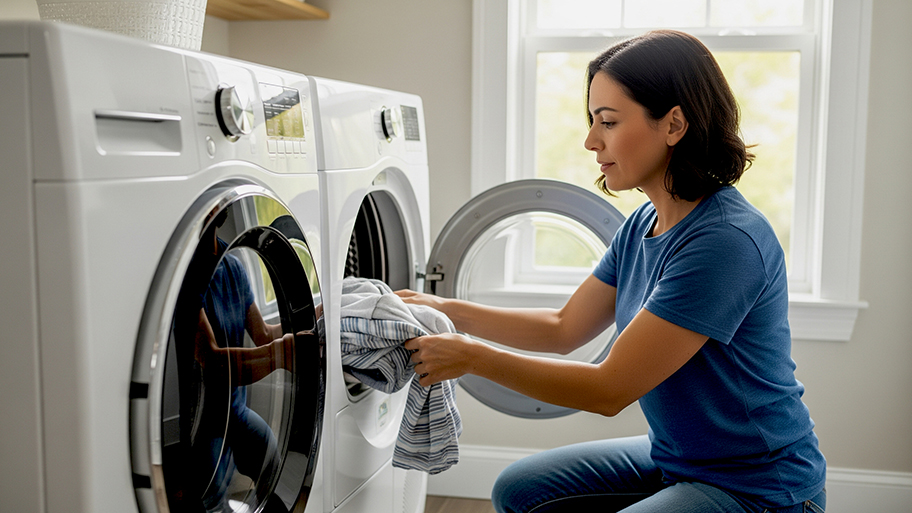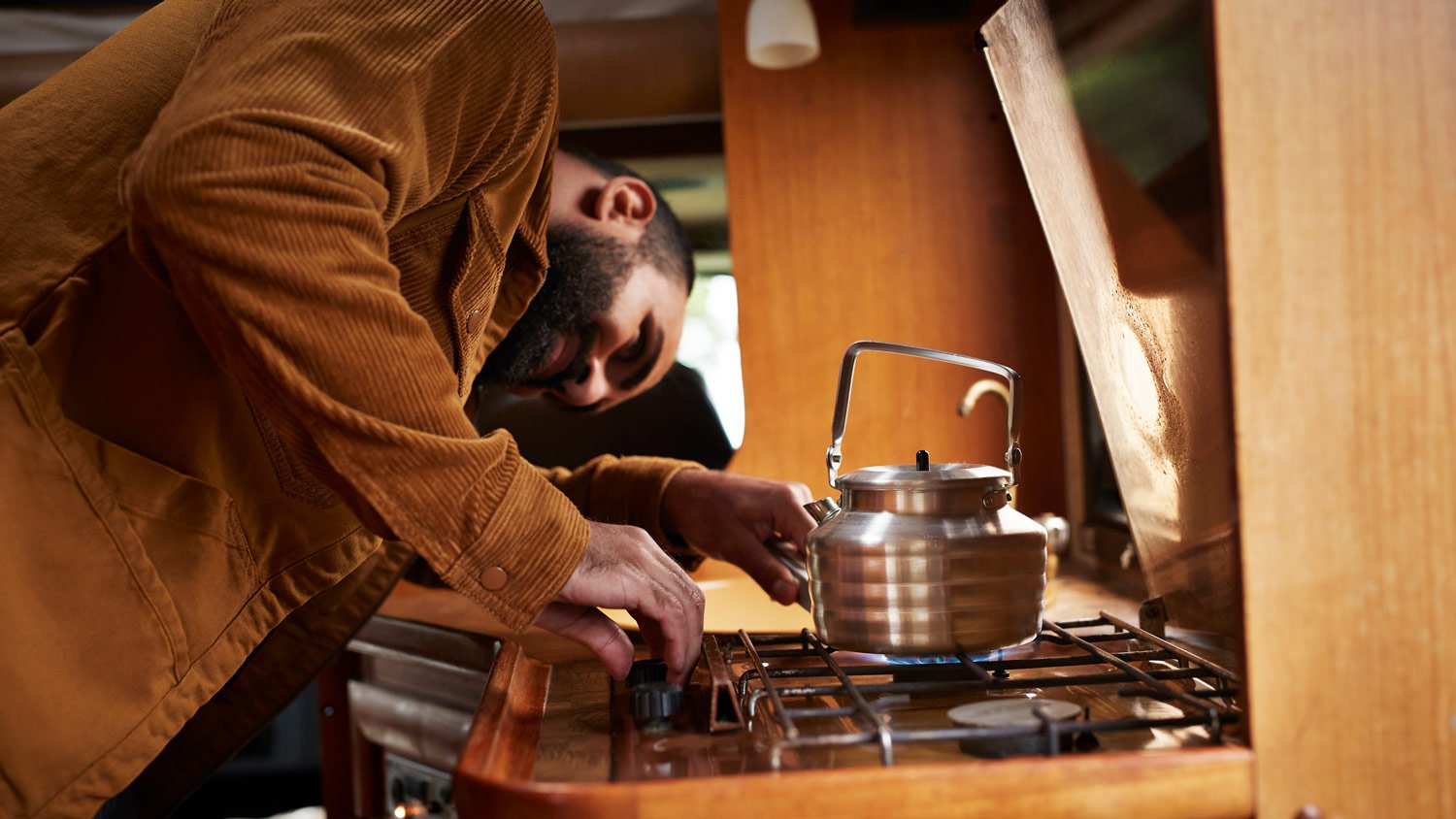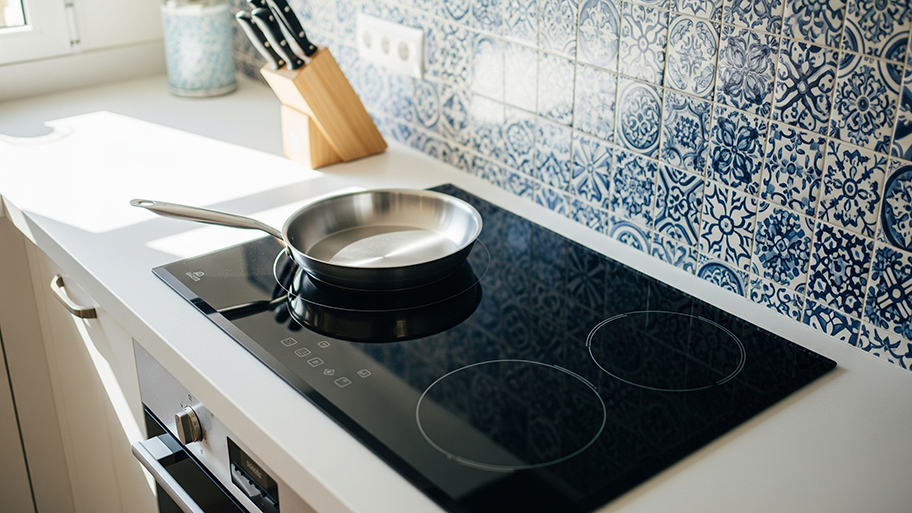
Replacing a dryer belt costs more than just the part unless you can DIY it. The labor cost can easily surpass 90% of the product cost, so if you are handy with tools, try it yourself first.
Ditch the matches and get your gas stove flame burning again


Debris build-up on stove parts can cause malfunctions.
Issues with gas lines are best handled by professionals.
Stoves with pilot lights may require re-lighting the flame.
It’s frustrating when you’re preparing a meal and your gas stove isn’t lighting properly. This is a common challenge that many homeowners face, and the solution could be a simple fix or require the help of a professional. If you have a problem with a gas stove not lighting, read on to learn how you can troubleshoot it.
Over time, grease, food particles, and other debris can accumulate and block the tiny holes where the gas should flow through. This blockage can prevent the proper mixture of gas and air, resulting in a weak or nonexistent flame.
To resolve this issue, carefully remove the burners and use a toothbrush or a soft brush to clean out any obstructions, making sure you are gentle and thorough.
In addition to your burner holes, dirt, grease, and debris can also accumulate on your stove’s igniter (typically found at the base of the burner) and prevent it from sparking properly.
This, too, can be fixed by gently cleaning it with a soft cloth or a small brush. After removing the build-up, make sure the igniter is dry before lighting the stove.
If your gas stove is clicking but just won’t light, the problem could be excessive moisture in the burner. Grease spills, boiling-over pots, or overly aggressive cleaning tactics could be the culprit.
Remove the burner cap to allow it to air out. If you can see any visible grease build-up, gently clean it up with a pipe cleaner and a mixture of dish soap and vinegar.

For the igniter to create the spark needed to ignite the gas, it must be in the correct alignment. If it’s not properly aligned, the igniter will not generate the necessary spark and will require readjustment.
If you suspect the igniter is the reason your stove is not lighting but find it’s clean and properly aligned, look for signs of damage and/or wear, such as cracks, discoloration, or a worn-down tip. Your stove’s igniter can wear out over time and require replacement. Look at your local hardware store or online to find a compatible igniter, and follow the manufacturer’s installation instructions when you replace it.
A blocked or leaky gas line can prevent the gas valve from fully opening. Check to see if the gas valve is open and determine if anything is blocking it from opening. In some cases, the gas supply to your stove may have been turned off and simply needs to be turned back on.
Working with gas can be very dangerous and even harmful to your health. Only attempt gas projects yourself if you have the experience and credentials to do so safely. Otherwise, let the professionals handle these jobs.
If the issue persists, you may need to hire a local gas appliance professional to assess and repair your gas supply. A stove appliance repair ranges in cost between $100 and $500, depending on your stove model.
Your stove’s safety valve controls the flow of gas to the burner and ensures safety by turning the gas off, if necessary. If your safety valve malfunctions, it may not allow the gas to reach the burner—preventing it from lighting.
Fixing a faulty safety valve requires the help of a professional, as it involves working with the gas line. It’s best to contact a qualified gas appliance technician to inspect and replace your safety valve.
If your gas stove is not lighting, it could be worth it to check if a tripped circuit breaker is to blame. Sometimes, the electrical circuit that powers the stove’s igniter can overload and cause the circuit breaker to trip and cut the power supply to your stove.
To fix this issue, locate your home’s electrical panel and see if any breakers are in the “off” or center positions. If you find a tripped circuit breaker, flip it back to the “on” position. This should restore power to your store and allow it to light up.
A gas leak can prevent gas from reaching your stove’s burner and prevent it from igniting. Similarly, if there are any problems with gas pressure, it can also affect the flow of gas to your stove’s burner. These issues require immediate attention as they pose a safety risk—especially if your gas stove was left on.
If you suspect a gas leak, it’s critical that you turn off the gas supply and contact a professional immediately. A gas appliance technician can assess the situation, identify any leaks, and resolve pressure issues to ensure the safe operation of your gas stove.

If your stove’s control knob is faulty or not working properly, it could prevent the gas from flowing to the burner and cause it to not ignite. To determine if this is the issue, check if the control knob is securely in place and turns smoothly.
If it feels loose or doesn’t turn easily, you may need to replace it. Also, check that the control knob is set to the correct position for ignition. If the problem continues, you should consult a gas appliance professional for assistance.
Some gas stoves have a pilot light as their primary method of lighting the stove. This is a tiny flame located under the stovetop that lights a burner when you’re ready to use it. If this flame goes out, your burner will not light. If you have a gas stove with a pilot light, you should learn how to re-light it if it ever goes out. Quality models of stoves feature protection around the pilot light, so it’s not common for it to go out; however, it could happen.
Locate the pilot light valve using your stove’s owner manual. Ensuring the burners are all turned off, turn the gas knob powering the pilot light to the lowest setting or the one labeled “pilot.” The pilot light may automatically ignite, or you may need to use a long-necked lighter.
A range hood is an appliance that hangs above your stovetop. It acts as a vent system and helps get rid of the smoke, grease, and smells that build up while you’re cooking by filtering the air or pushing it out of your home. A downdraft range hood sits vertically behind the stove. Because of their proximity, the vents can create too much airflow, quickly extinguishing the flames of your gas stove shortly after you light them.
Try decreasing the speed of your range hood or increasing your burner setting to create more balance between the ventilation and the size of the flame.
According to Angi data, nearly 51% of homeowners have electric stovetops, while 46% of homeowners have gas stovetops. Check out the split between electric and gas stoves:
Called and gave me a price over the phone. Seemed knowledgeable about repairs and made me feel comfortable hiring him. Issue was exactly what he described over the phone. Did a quick and great repair on garage door!
Jesse was an excellent repair person, on time. He thoroughly explained the problem, answered my questions. Tried to keep the repair cost down. But still think it was a little pricey although he went above and beyond. Ask for Jesse.
Attempting to work with Ed was such a frustrating experience. Things started off very well. In fact, he came out three times to rebid on the project after the project scope changed. He always seemed patient. After 3 months of going back and forth, it finally came time to schedule the work...
We couldn't be happier! Just to give you a clear understanding of how firmly Hardwood Flooring Los Angeles stands behind work, we had them uninstall and reinstall a brand new vent hood that had been installed incorrectly by the appliance dealer. Crew did a beautiful job on the installation,...
We had a pipe break and lots of water damage to our wood floor. The emergency crew that came out was really great--quick and considerate, and they did a thorough job I thought. Because they were recommended by Auto Club and I was so impressed, I decided to use them for the floor repair. I...
Excellent service. Excellent work. From start to finish I am happy with the job done and I look forward to having the rest of my windows repaired
From average costs to expert advice, get all the answers you need to get your job done.

Replacing a dryer belt costs more than just the part unless you can DIY it. The labor cost can easily surpass 90% of the product cost, so if you are handy with tools, try it yourself first.

Installing a gas dryer can help you save on your monthly energy bills. Depending on whether you need a new gas line, gas dryer installation costs will vary greatly.

Broken glass stove tops are not only unsightly; they can also be dangerous. Use this guide to learn how much glass stove top replacements cost based on factors like size and type.

Now the reasons why your dryer is leaking water and what you can do to prevent further water damage and address the problem.

You can replace a heating element in an oven in less than one hour by shutting off power, removing screws, and swapping it out after checking for continuity.

Washing machine not spinning? Don’t panic—just because it appears to be broken doesn’t mean you can’t get your washer running again. Read on to learn how.